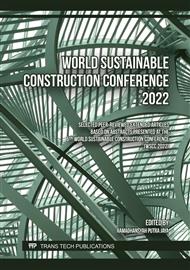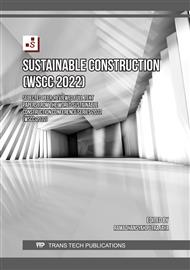p.127
p.139
p.153
p.161
p.171
p.181
p.195
p.213
p.223
Preventive Modelling in Risk Management on the Construction Project
Abstract:
The construction industry is a service sector that is often faced uncertain circumstances with a high rate of changes in its project operations. These changes not only often occur in the implementation (build) phase of a construction project, but it also happens in the planning (design) phase. In general, dealing with such uncertain circumstances means to have the possibility for failure in achieving the goals of a project. Even though changes and adjustments are common in this sector, it nevertheless will bring risks to the construction works. For example, the time, costs, and quality. Hence, a preventive system is needed with which can minimise the risks that may arise during the project activities. The objective of this research is to identify the caused factors of the risks on the construction business, and that to further suggest the applicable model as the preventive action of the risks. This study began with a detail review to seven risk indicators; Labour Risk (X1), Contractual Risk (X2), Human Resources Risk (X3), Design and Technology Risk (X4), Material and Tool Risk (X5), Implementation Risk (X6), and Force Majeure Risk (X7). This research was developed further using questionnaires and expert validation as the primary data, which furthermore analysed using analysis factors, descriptive analysis, and probability impact matric in order to determine the level of the risks. The risk level analysis resulted three variables as the top event (dominant risk), which are X1, X3 and X4. These findings were then advanced following Bowtie diagram and scenario analysis, hence suggested a modelling that described possible preventive and corrective strategies. Both the Bowtie diagram and scenario analysis are not only helpful as the guidance and warning, but also practical for the construction practitioners in managing the risk management and decision making for the construction project.
Info:
Periodical:
Pages:
213-221
Citation:
Online since:
March 2023
Authors:
Keywords:
Price:
Сopyright:
© 2023 Trans Tech Publications Ltd. All Rights Reserved
Share:
Citation:



